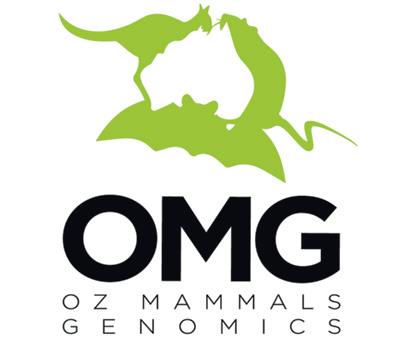Burrowing bettong (boodie) conservation genomics
Conservation assessment of the burrowing bettong: delimiting sub- species and assessment of genetic diversity of contemporary and extinct populations to inform species management
The burrowing bettong, or boodie (Bettongia lesueur), once had one of the widest distributions of any Australian mammal and was abundant throughout much of the southern two-thirds of Australia. In the last 200 years the burrowing bettong has declined dramatically, although it persisted in the wheatbelt of Western Australia and the southern deserts until the 1940s and in the Gibson Desert until the early 1960s.
As a result of agricultural development, fox and cat predation the burrowing bettong is now locally extinct on mainland Australia, as well as Dirk Hartog and Boodie Islands, and only persists on three islands off the Western Australian coast: Barrow, Bernier and Dorre Islands. The species is federally listed as Vulnerable, under the EPBC Act and considered ‘Near Threatened’ under IUCN criteria.
Boodie populations are dependent on ongoing conservation measures and a specific conservation program. There is abundant evidence that boodies are highly vulnerable to predation by introduced foxes and cats and fail to survive in the presence of these predators. As such, boodie survival is only possible on introduced predator-free islands and mainland exclosures.
The boodie has been successfully reintroduced to mainland exclosures at Heirisson Prong, Yookamurra, Scotia, Matuwa (Lorna Glen) and Roxby Downs; these populations have survived and reproduced for >5 years. Similarly, translocations to Faure, Alpha and Boodie Islands have been successful and it is estimated that the total population is currently >30 000 animals.
Whilst the translocation program has been successful in recovering numbers of this species, there has been no assessment of how well genetic diversity is represented and/or maintained in these new populations. Further, several new, large conservation sites (Dirk Hartog Island, DBCA; Mallee Cliffs and Newhaven Sanctuaries, AWC; and several western NSW National Parks, AEWC and Living Deserts) are to be stocked with boodies from 2018. It is therefore timely to to provide a genetic assessment of the diversity and genetic relationships amongst contemporary boodie populations.
We are investigating boodie population genomics using a combination of targeted marsupial exon capture and ddRAD sequencing. This includes comparing the effectiveness of using single vs. mixed source populations, to inform best practice for upcoming translocations. Using historical museum specimens we will also survey the genetic diversity present in mainland populations prior to extirpation and to clarify the species and sub-specific relationships. A further project will focus on the special case of mixing diverged source populations for genetic rescue, using the Matuwa translocation as a case study, and will look at patterns of genomic introgression over an 8 year post-translocation time series.
Project coordinators:
- Kym Ottewell (Department of Biodiversity, Conservation and Attractions, WA)
- Mark Eldridge (Australian Museum)
Project collaborators:
- Jeremy Austin (University of Adelaide)
- Margaret Byrne (Department of Biodiversity, Conservation and Attractions, WA)
- Roberto Portela Miguez (Natural History Museum, London)
- Craig Moritz (Australian National University)
- Rujiporn (Elf) Thavornkalapachai (University of Melbourne)
- Lauren White (University of Adelaide/ Max Planck Institute for Evolutionary Anthropology)
